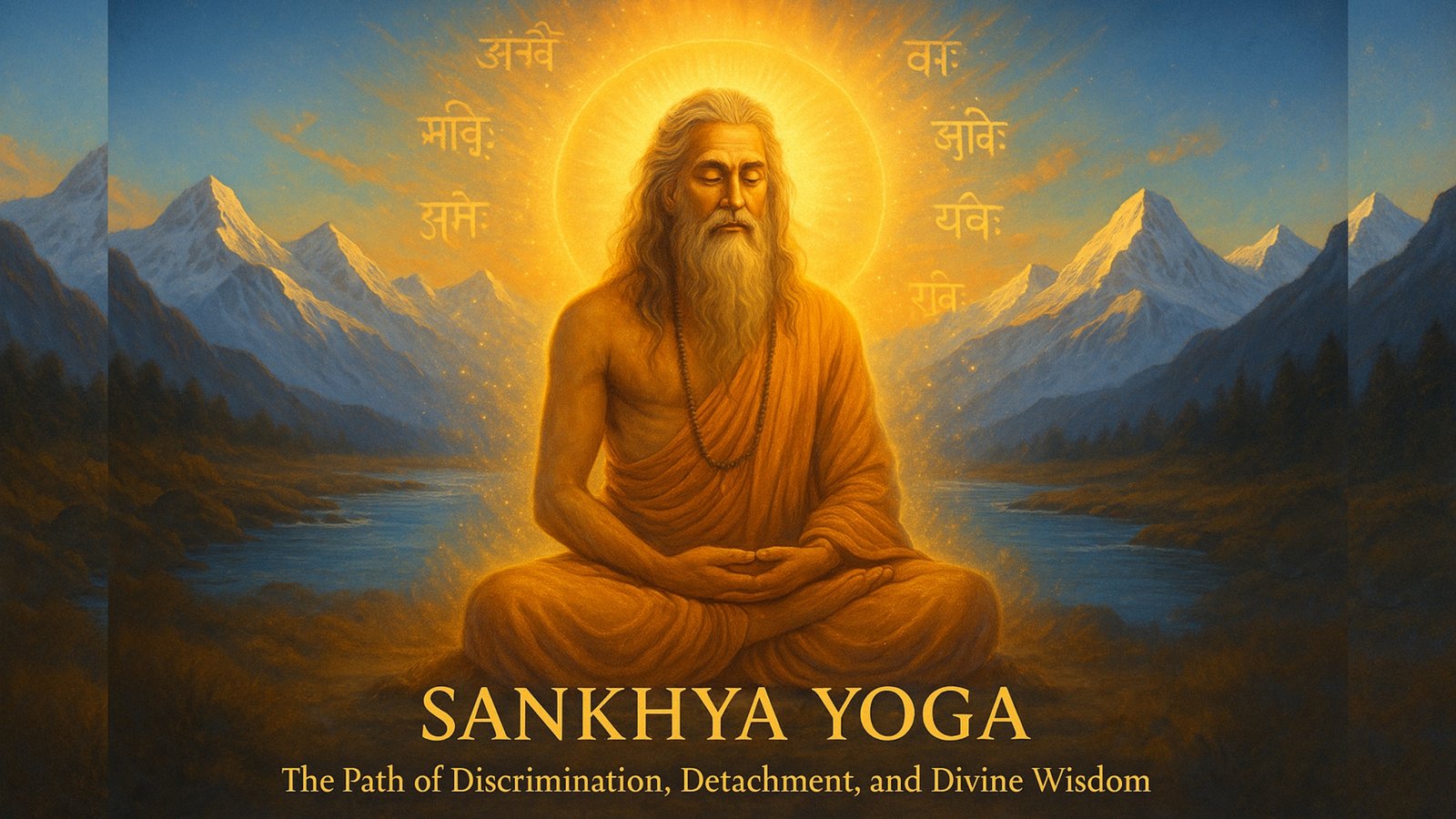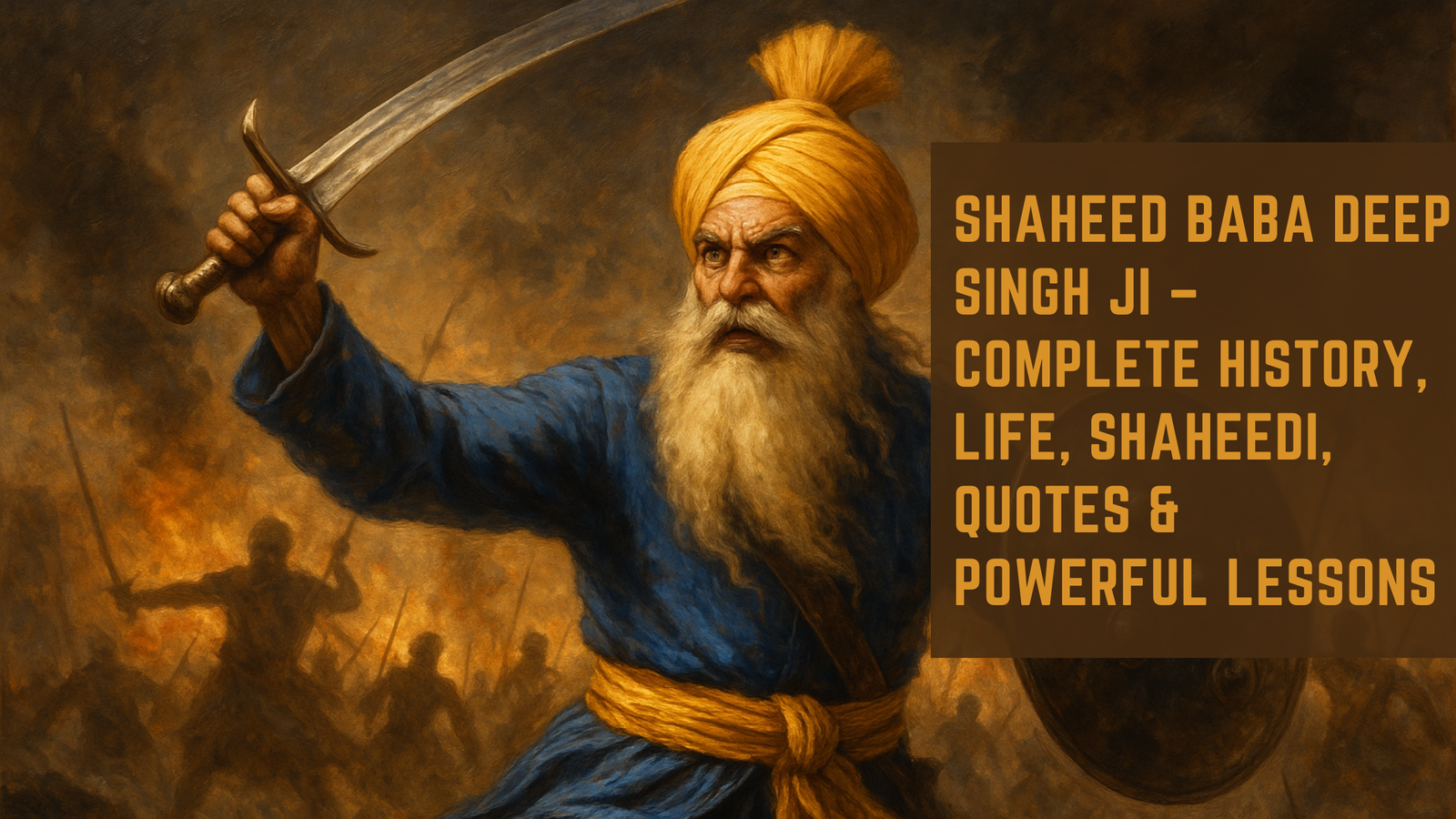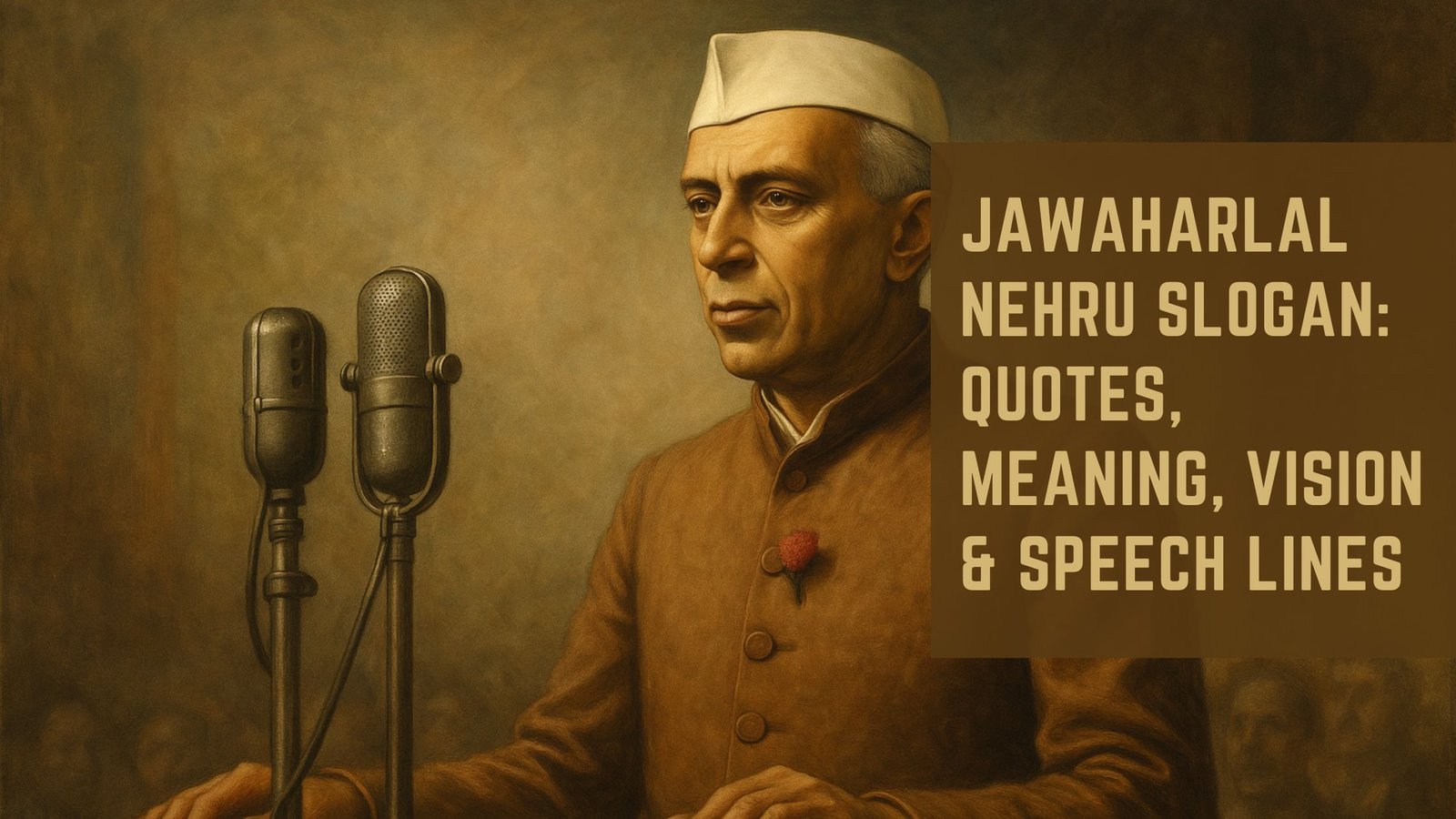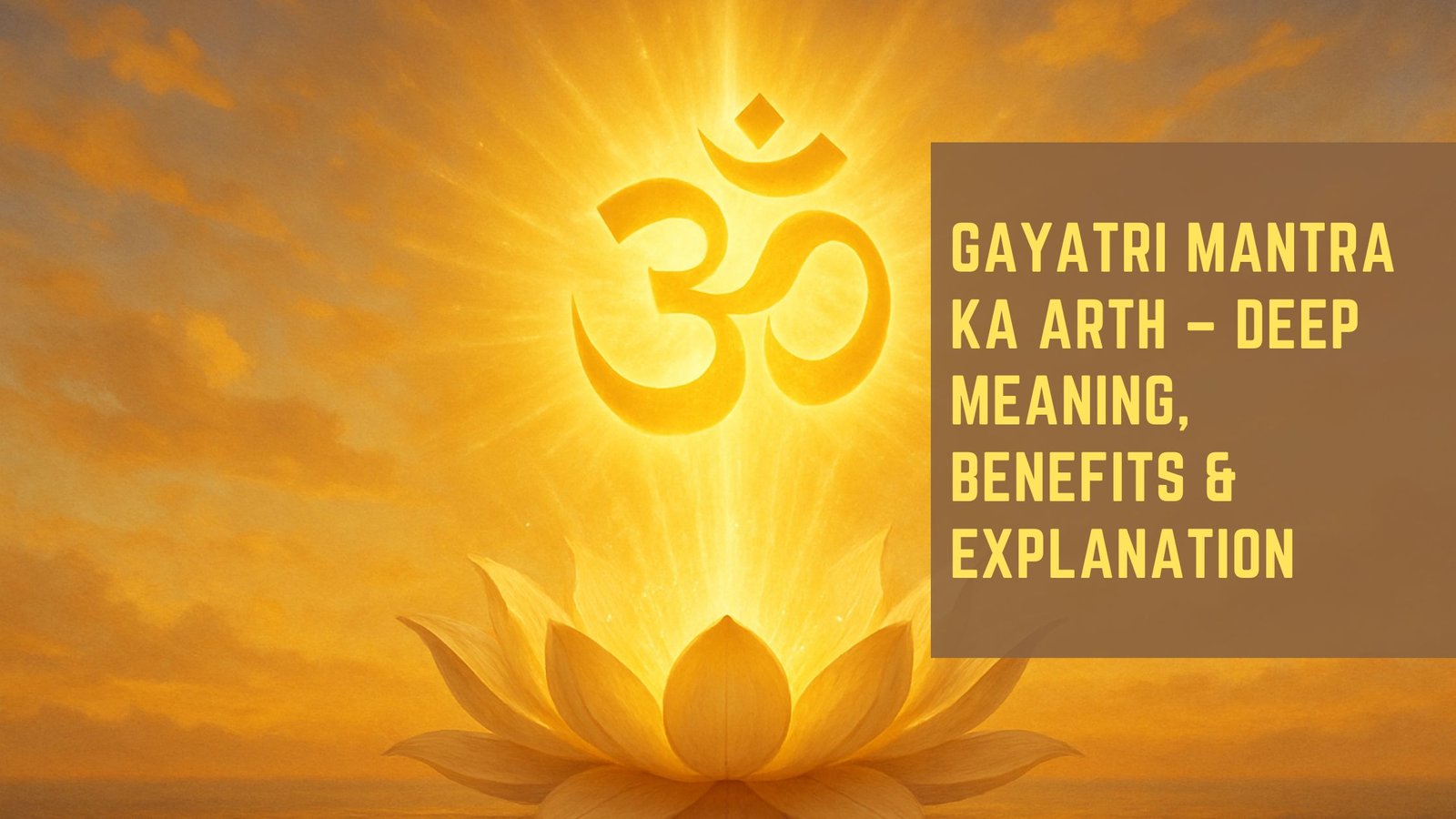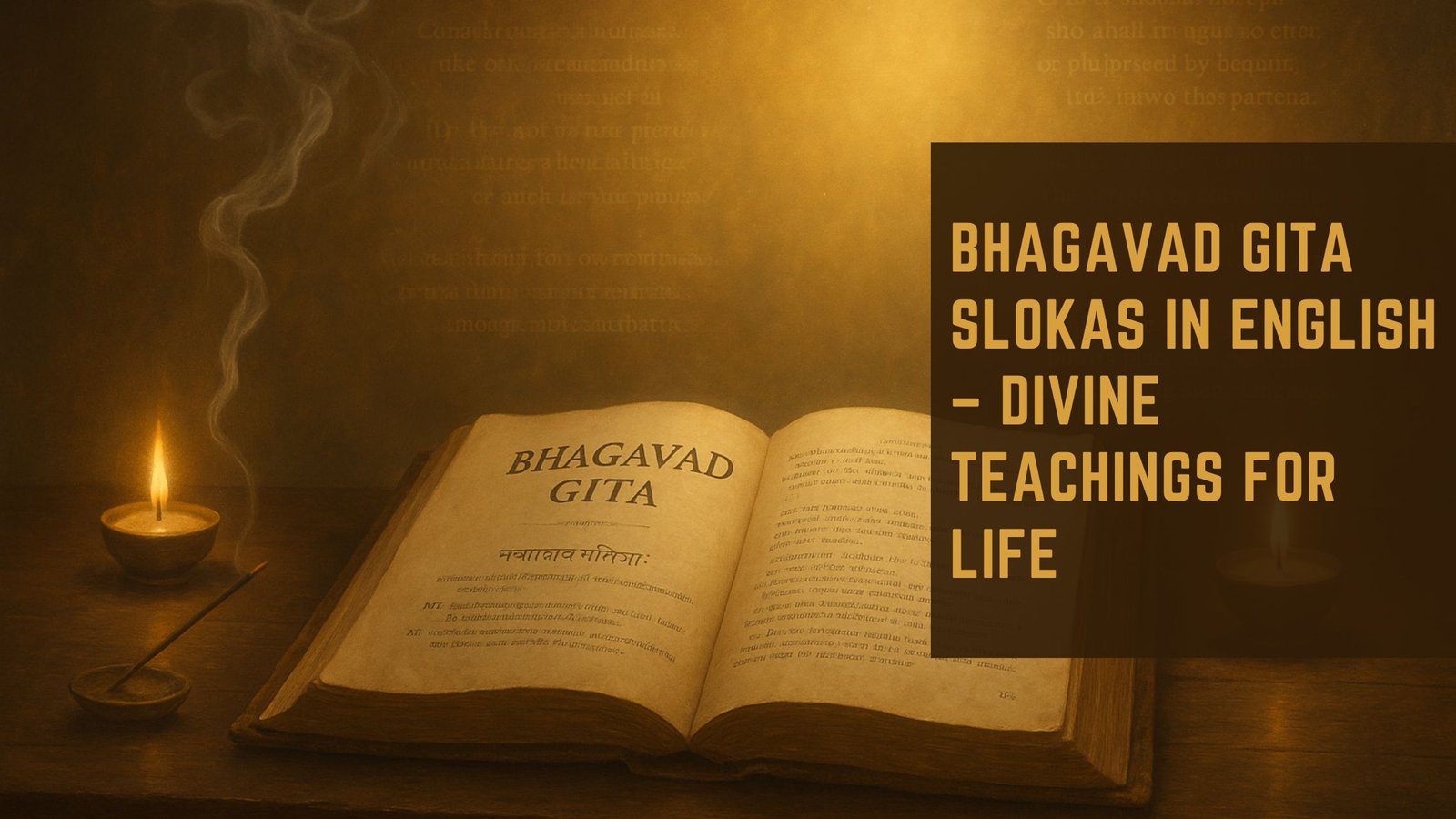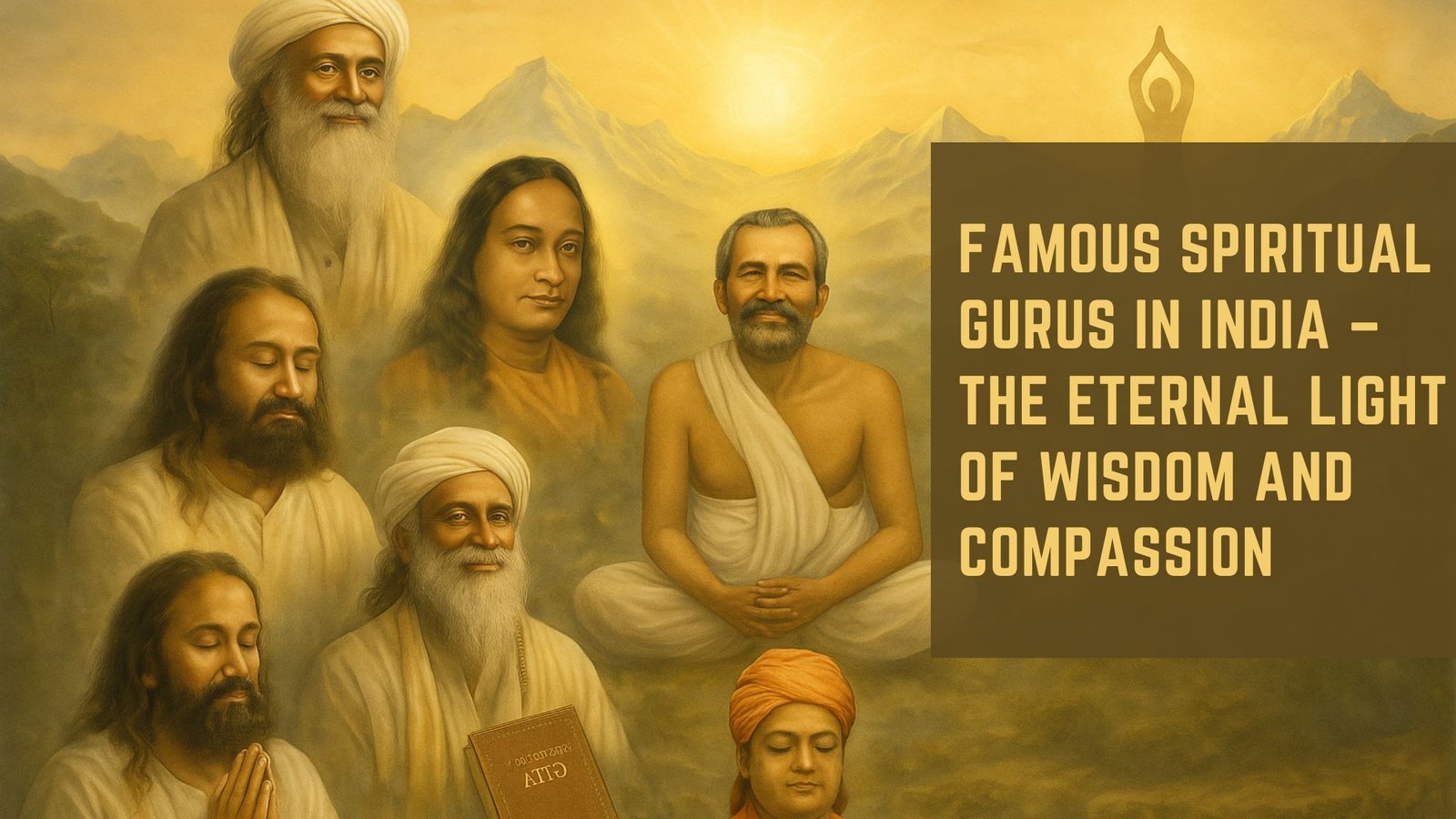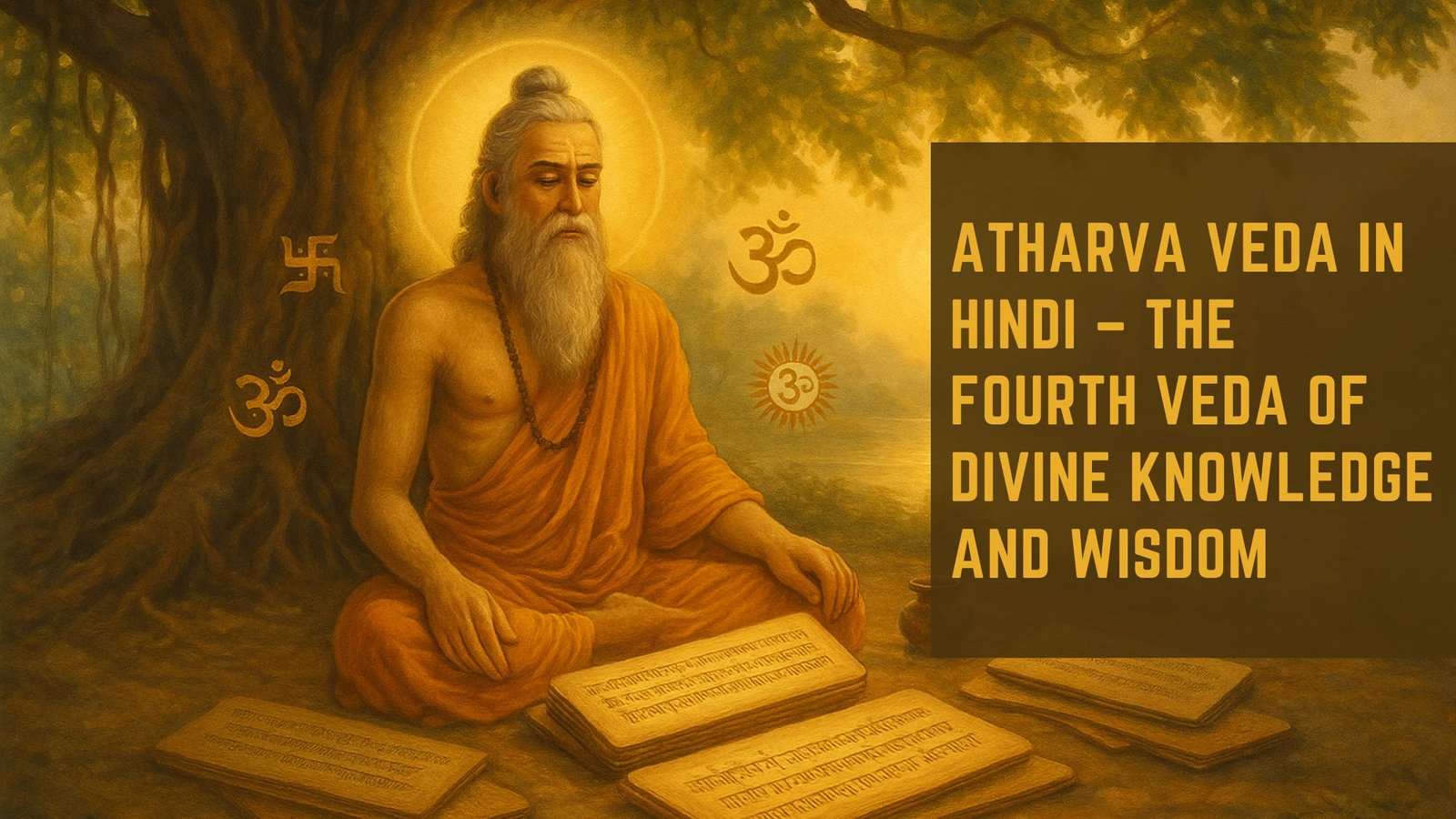The Divine Blueprint of Sankhya Yoga
Sankhya Yoga (सांख्य योग), as revealed in the second chapter of the Bhagavad Gita, is not just a philosophical system—it is the gateway to eternal wisdom and the art of mastering human emotion. Rooted in deep introspection and the discrimination between the Self and the body, Sankhya Yoga teaches us how to rise above confusion, pain, and fear by realizing our true spiritual identity.
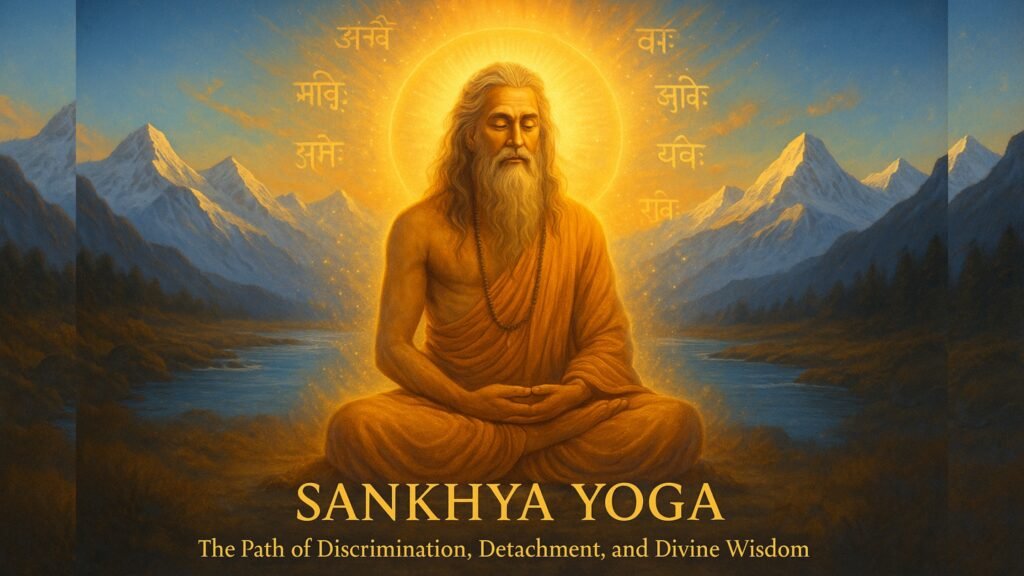
“अशोच्यानन्वशोचस्त्वं प्रज्ञावादांश्च भाषसे।”
“You grieve for those who should not be grieved for, yet you speak words of wisdom.”
— Bhagavad Gita 2.11
This profound teaching was Lord Krishna’s opening line in the Sankhya Yoga chapter, reminding Arjuna—and all of us—that the soul is eternal, and emotional suffering arises from illusion and attachment.
Table of Contents
Essence of Sankhya Yoga: Knowledge Beyond the Material
Sankhya Yoga literally means “The Yoga of Knowledge” or “Analytical Wisdom.” It teaches discrimination between the real (the soul) and the unreal (the body and mind). According to the Gita, this knowledge is the foundation of liberation (Moksha).
Core Principles of Sankhya Yoga:
- The Atman is Eternal
The soul never dies. It cannot be burned by fire, nor drowned by water. “न जायते म्रियते वा कदाचिन्”
“It is never born, nor does it ever die.” — Gita 2.20 - Detachment from Emotions
Emotions like anger, fear, grief, and desire are products of ignorance. Teaches us to witness them—not become them. - Clarity through Discrimination
The key is to recognize the Self as different from the mind, senses, and body. Only then can true freedom dawn. - Steadfastness in Dharma
Even amidst pain and uncertainty, Sankhya Yoga encourages us to walk the path of righteousness without attachment to results.
Sankhya Yoga and Human Emotions: Understanding from the Soul
It offers a divine approach to all human emotions—not by suppressing them but by transcending them.
Grief and Loss
Arjuna stood overwhelmed by grief. Lord Krishna didn’t negate his feelings—but lifted him from mourning to understanding.
“That which is born will surely die, and that which dies will surely be reborn.”
— Gita 2.27

Fear and Anxiety
Fear arises when we identify with the perishable. This teaches us: “You are not the body. You are the immortal soul.”
Desire and Attachment
All suffering stems from clinging. When one detaches with wisdom, joy blossoms from within.
“तस्मादसक्तः सततं कार्यं कर्म समाचर”
“Therefore, perform your duty without attachment.” — Gita 3.19
Love and Compassion
True love flows when we see others as divine souls—not just bodies with roles. Sankhya Yoga enables us to love unconditionally, without ego or expectation.
Modern Relevance
Sankhya Yoga is not limited to ancient times or the battlefield of Kurukshetra. It is a practical guide for modern living:
- In Relationships: Discrimination helps us love with wisdom, not blind attachment.
- In Work and Stress: It teaches detachment from outcomes, bringing peace and efficiency.
- In Mental Health: Knowing that the Self is beyond thoughts and feelings brings profound inner stability.
- In Spiritual Growth: It creates the foundation for Bhakti (devotion) and Karma (action) to flourish with purity.
Quotes that Illuminate the Soul
“You are not the mind. You are not the body. You are the immortal witness of all.”
— Sankhya Wisdom
“The wise grieve neither for the living nor the dead.”
— Gita 2.11
“ਸਚੀ ਪਛਾਣ ਹੀ ਆਤਮਕ ਅਜ਼ਾਦੀ ਦੀ ਚਾਬੀ ਹੈ।”
“True recognition is the key to spiritual freedom.” — Sikh Thought
“विवेक और वैराग्य ही आत्मा को मुक्ति के द्वार तक ले जाते हैं।”
“Discrimination and detachment lead the soul to liberation.” — Vedanta
Steps to Practice Sankhya-Yoga in Daily Life
- Begin the Day with Self-Inquiry: “Who am I?”—ask this daily.
- Read and Reflect on Gita Chapter 2: Let its verses become your inner compass.
- Detach with Love: Do your duties but don’t cling to outcomes.
- Witness Emotions, Don’t Become Them: Let anger, sorrow, or excitement pass like clouds.
- Embrace Silence and Meditation: The voice of the soul is heard in stillness.
Conclusion: Sankhya Yoga is the Light of the Inner World
Sankhya Yoga is the divine art of seeing clearly. It is the lamp that removes the fog of ignorance and shines the light of truth. When practiced, it leads to unshakeable peace, fearless action, and boundless love.
It is the ultimate stress relief—not temporary distraction, but eternal understanding.
It teaches us to be a good human—not by pleasing the world but by aligning with truth.
It becomes one of the Pillars of love, because true love is only possible when one sees the soul in all.
Call to Action
Ready to awaken the Sankhya wisdom within you?
Dive deeper into the Essence of the Gita and explore how every chapter unfolds like a sacred conversation between the soul and the Divine.
